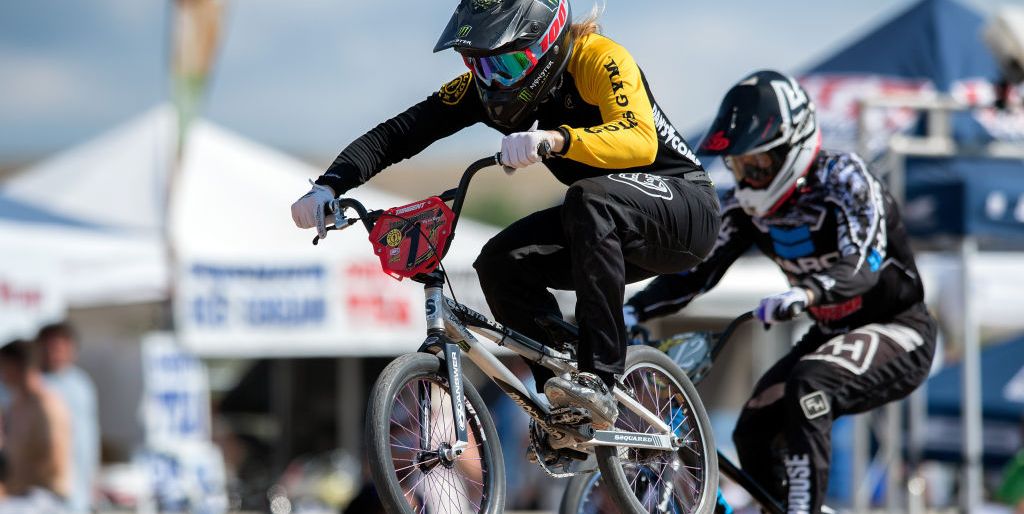Are you looking for a new way to stay active, have fun and challenge yourself? BMX bike competitions are a great way to do just that!
With different types of BMX bike racing, there’s something for everyone. Read on to learn more about the thrilling world of BMX bike competitions and how to get involved.
BMX (Bicycle Motocross) is an exciting and rapidly growing extreme sport that has seen tremendous growth in recent years. It involves racing bikes on a track made up of jumps, banked corners, bowls, and other obstacles. BMX bike competitions can be found in many countries all across the world and are growing in popularity at both professional and amateur levels.
This guide will provide an overview of the different types of BMX bike competitions as well as some general advice on how to get involved if you’re interested in trying it out. We’ll look at the two main disciplines – Freestyle BMX and Race BMX – how competition levels are graded from beginner to pro-level, what equipment you’ll need, the rules for each discipline, and what common mistakes should be avoided when getting involved with competitive riding.

Explanation of BMX bike competitions
BMX bicycle competitions are a type of bicycle race held on dirt tracks or sometimes even on asphalt. It is an individual sport, with the goal of each rider being to get from one end of the track to the other as quickly as possible. The riders compete in heats, usually against two or three other people, and the person with the fastest time is awarded points based on their placement in the heat. In most competitions points are accumulated throughout the day and a winner is determined at the end of each event depending on their overall points total.
BMX bike competition events vary greatly between different organizations and countries but typically involve some combination of four popular disciplines: BMX Racing, Freestyle BMX, Dirt Jumping and 4 Cross races. These events signify different skill sets needed to successfully navigate them, no matter which style you choose to ride it is important to know what kind of competition you are attending so you can prepare appropriately.
The racing element requires riders to complete multiple laps around a pre-determined course using either strictly elliptical turns or utilizing ‘S Turns’ for cornering approaches – all while finishing as fast as possible without error such as hitting curves too hard or taking advantage of any unintentional ‘ bumps’ in the course leading up to a jump section. Races will also sometimes feature banked turns allowing riders more control when navigating sharp corners; this tends to give them more acceleration speed when exiting after completing a section perfectly.
Freestyle BMX events attempt to encourage competitors in displaying their creativity through trick execution while they tackle various obstacles like quarter pipes ‘ teeter totters’ bowls -spine transfers ,half pipes etc A panel judges riders according landings , technical difficulty ,variation ,technical difficulty & speed controlling abilities through completing tricks during rounds.
Dirt jumping events allow contestants to showcase their leaping skillset onto seemingly steep jumps over huge amounts of landings enhanced for safe bail outs then continuing its way back to another take action. This requires solid bike surroundings and impeccable balance control since it is easy to suffer from few airborne errors. Mostly done by friends or even backyards many people try this one first before getting into competitions and eventually joining professional tours too. Moreover, some trails like pump tracks for bikes are available for practice too.
Last but not least 4 cross race along with supercross were added to official slopestyle contest after being put between two-three experts who battle head-on resulting in a winner taking overall victory with each round having unique terms and obstacle courses. Overall understanding these four categories along with perfect riding capabilities and a mixed skill set, all your success story’d look like a testament to your true capabilities enjoying every bit and focuses on staying consistent!
Importance of the guide
A complete guide to BMX bike competitions will provide an overview of the different types of competitions and how to get involved in them. It will also explain the importance of following safety guidelines and regulations when taking part in BMX bike competitions, as well as what skills and abilities are necessary in order to be successful in these types of events.
Furthermore, this guide will contain important information on the various equipment and clothing needed for bike competitions, the different riding styles employed by bikers, the type and length of tracks used for each competition, as well as tips and strategies for success.
Finally, readers will be able to find out more about other related topics such as nutrition, training programs, recovery techniques, supportive communities and even where to buy or rent all kinds of bikes. This guide is intended to provide novice riders with all they need to know in order to start taking part in BMX bike competitions effectively.
Overview of the guide
This guide will provide an overview of BMX competitions, including the different types available, rules, regulations and tips on how to get involved.
In addition, this guide will discuss the importance of safety preparations and equipment necessary to participate in BMX competitions.
Finally, we will cover other resources that can help beginner BMX racers explore the sport in more detail. Whether you’re just starting out or want to compete at a higher level, this guide has something for riders of all levels and interests.
How to Get Involved in BMX Bike Competitions
If you’re looking to get involved in the world of BMX bike competitions, there are a few steps you need to take. Once you’ve made the decision to participate in events, it’s important to understand each type and what level of commitment is required.
First, locate a local or regional schedule of BMX bike events and make sure you know the different types that are available. You may be able to find these through your local BMX track or even through online directories. Make a note of any special requirements for each event such as pre-registration and payment for entry fees.
The next step is to look for ways to practice riding your bike depending on which type of competition you are going to enter. If your goal is to participate in street and park events, look for trails and public parks with good terrain where you can practice safely. Freestyle and race competitions will require different types of preparation so make sure that you understand what levels and obstacles you need be comfortable with before entering any type of event.
Once you have chosen the correct type of event, it’s time get some gear together: Before signing up, check whether riding gear (such as helmets) will be supplied at the event or if they must be purchased separately by participants. Depending on where the competition takes place, participants may also need additional items such as knee pads or elbow pads – both safety equipment and apparel requirements vary from one venue type to another – so it’s best practice to double-check what items you’ll need for the competition before signing up for an event.
Finally, finding experienced riders who can help provide tips can go a long way towards making sure that your foray into BMX bike competitions is successful – many events offer beginner lessons prior to races or freestyle sessions . Ask around at local tracks or stores for advice on improvement as well as general safety tips from experienced riders so that when it’s time compete, nothing stands between you and success!
Acquiring a BMX Bike
Before getting started with BMX bike competitions, you’ll need the appropriate equipment. A BMX bike should be bought with the sport in mind—BMX bikes have components such as a smaller frame and more durable tires tailored for stunts and hops. The most important factor to consider when selecting a BMX bike is its size. Knowing your height and leg length will help you choose an appropriately sized frame so you can ride comfortably and perform jumps safely. Additionally, make sure to check out used bikes at local shops since they can offer higher quality equipment at more affordable prices.
In addition to having the right Bike, it’s also necessary to ensure that your safety equipment is up-to-date for competition riding. Riders should always have the proper safety gear whenever riding—this includes long-sleeved clothes, a padded helmet, elbow pads, knee pads and gloves. Having the correct safety wear on can go a long way towards avoiding any injuries while performing tricks or racing.

Learning Basic Riding Skills
When it comes to looking for a career in BMX riding, learning the fundamentals and mastering of basic skills can often mean the difference between success and failure. Experienced riders know that a proper foundation in foundational BMX skills is one of the most important aspects when it comes to starting out in such extreme sports.
For any beginner who wishes to break into the world of BMX competing, there are certain moves and tricks that should become second nature before start competing regularly. Of course, mastering more advanced moves is necessary over time to remain competitive, but some basics you should learn first include:
- Balancing on one bar: Balancing on one pedal or bar means balancing on either foot or hand as you’re maneuvering around obstacles.
- Single-foot or “one-footer” grinds: This technique consists of riding with just one foot while using the other foot to kick the back peg. Its purpose is mainly used for twisting into tricks while adding personal flair.
- Pumping transitions: This skill requires you to use momentum to move your bike through a transition without pushing with your feet. The skill can help keep things flowing smoothly, giving you an edge when it comes to speed competition competitions.
- Basic jumps: Getting enough height on jumps can require intense practice and concentration — mastering bunny hops will give you a strong base and will be incredibly important for progressing further in freeform competitions.
- 360s: Spinning 360 degrees while airborne requires timing and confidence, but perfecting this trick often takes months or even years due to its complexity yet high visual appeal — if done correctly can wow audiences during any competition setting.
Joining a Local BMX Club
If you are interested in BMX bike competitions, joining a local BMX club is an excellent way to start. Clubs provide access to race tracks, competitions and resources that can help you enhance your skills and knowledge of the sport. Many clubs also offer advice on how to find and purchase a bike, as well as what type of protective gear is needed and other helpful information.
Before joining a club, you may want to look into its affiliations, such as the National Bicycle League (NBL) or American Bicycle Association (ABA). Additionally, check for any membership requirements that may exist prior to signing up – such as age restrictions or a certain level of experience or competition participation. The resources provided by the club should be able to provide everything you need from information about events and races, training tips from experienced riders, repair instruction and tutorials on basic maintenance needs for your bike.
It’s highly recommend that riders looking for serious competition should seek out the advice of veteran riders in their club. Experienced riders can help newcomers gain proficiency while they participate in organized ride days and contests at the local level. Through heavy practice over time under the guidance of veterans will likely set them up for success at higher levels competitions down the road if desired.
Participating in BMX Competitions
If you’re interested in participating in BMX competitions, there are a few essential elements to keep in mind. For example, the types of competitions that are available. You can choose from single whips, double whips, backflips or tailwhips—the list goes on and on. Additionally, you’ll want to become familiar with the rules and regulations that apply to the competition format you’re joining. It’s also important to understand scoring procedures and how points are awarded.
Once you’ve chosen your competition style, you’ll want to invest in quality gear specific to your needs. This could include a helmet, elbow pads, knee pads or fingerless gloves designed for BMX riders. It is important that this gear fits properly and is comfortable enough to give you optimal protection while also allowing freedom of movement during your ride.
Finally, it’s helpful to set specific goals as well as review other riders’ performance videos from recent events. This criterion gives you an idea of what type of success their tricks gained when judged; this information may help inform some decisions that must be made about what moves are possible for your competition level or which techniques might score higher points overall.
Conclusion
At the end of the day, BMX bike competitions are a great way to have a lot of fun, push yourself to become better, and challenge yourself in an intense environment. Whether you love speed, tricks or style there is something for everyone in the world of BMX competitions.
While it helps to research extensively and understand the levels in competition, try not to overthink it and just get out there on your bike! As long as you put in effort and stay true to your experience-level you will be sure to progress quickly.
Have fun and enjoy learning how well you can maneuver a bike while competing with others.
FAQ’s
What are the different types of BMX race bikes?
There are several types of BMX race bikes, including race, freestyle, dirt jump, and street BMX.
How do you get into BMX racing?
To get into BMX racing, you can start by finding a local BMX track or club, getting a BMX bike, and practicing your skills.
How does a BMX competition work?
In a BMX competition, riders compete against each other in heats or rounds, with the fastest or most skilled riders advancing to the next round until a winner is determined.
What are the different levels of BMX?
The different levels of BMX include beginner, intermediate, expert, and pro.
Which BMX brand is best?
The best BMX brand is subjective and depends on personal preference, but some popular brands include Haro, GT, Redline, and Mongoose.
What is the most famous BMX?
The most famous BMX is likely the classic 1982 movie “E.T. the Extra-Terrestrial,” which featured a memorable BMX chase scene.
What is the full name of BMX?
BMX stands for Bicycle Motocross.
What is BMX full for?
BMX is an abbreviation for Bicycle Motocross.
Is BMX an extreme sport?
Yes, BMX is considered an extreme sport due to the high speeds, jumps, and stunts involved.
What type of BMX is in the Olympics?
The type of BMX in the Olympics is BMX racing, which involves a track with jumps and turns and is a timed event.
See more-
- Best Bmx Bikes Under 200 2023
- Best Bmx Bikes Under 300 2023
- Best Bmx Bikes Under 500 2023
- Best Bmx Cruiser Bikes 2023
- Best Bmx Freestyle Bikes for Adults 2023

